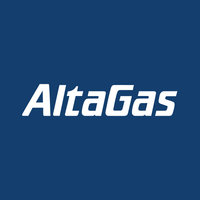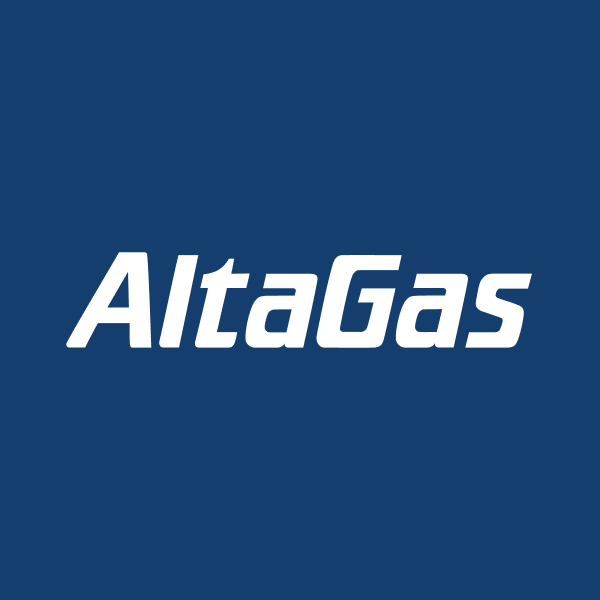
AltaGas Ltd
TSX:ALA


| US |

|
Johnson & Johnson
NYSE:JNJ
|
Pharmaceuticals
|
| US |

|
Berkshire Hathaway Inc
NYSE:BRK.A
|
Financial Services
|
| US |

|
Bank of America Corp
NYSE:BAC
|
Banking
|
| US |

|
Mastercard Inc
NYSE:MA
|
Technology
|
| US |

|
UnitedHealth Group Inc
NYSE:UNH
|
Health Care
|
| US |

|
Exxon Mobil Corp
NYSE:XOM
|
Energy
|
| US |

|
Pfizer Inc
NYSE:PFE
|
Pharmaceuticals
|
| US |

|
Palantir Technologies Inc
NYSE:PLTR
|
Technology
|
| US |

|
Nike Inc
NYSE:NKE
|
Textiles, Apparel & Luxury Goods
|
| US |

|
Visa Inc
NYSE:V
|
Technology
|
| CN |

|
Alibaba Group Holding Ltd
NYSE:BABA
|
Retail
|
| US |

|
JPMorgan Chase & Co
NYSE:JPM
|
Banking
|
| US |

|
Coca-Cola Co
NYSE:KO
|
Beverages
|
| US |

|
Walmart Inc
NYSE:WMT
|
Retail
|
| US |

|
Verizon Communications Inc
NYSE:VZ
|
Telecommunication
|
| US |

|
Chevron Corp
NYSE:CVX
|
Energy
|
Utilize notes to systematically review your investment decisions. By reflecting on past outcomes, you can discern effective strategies and identify those that underperformed. This continuous feedback loop enables you to adapt and refine your approach, optimizing for future success.
Each note serves as a learning point, offering insights into your decision-making processes. Over time, you'll accumulate a personalized database of knowledge, enhancing your ability to make informed decisions quickly and effectively.
With a comprehensive record of your investment history at your fingertips, you can compare current opportunities against past experiences. This not only bolsters your confidence but also ensures that each decision is grounded in a well-documented rationale.
Do you really want to delete this note?
This action cannot be undone.

| 52 Week Range |
32.15
44.1
|
| Price Target |
|
We'll email you a reminder when the closing price reaches CAD.
Choose the stock you wish to monitor with a price alert.

|
Johnson & Johnson
NYSE:JNJ
|
US |

|
Berkshire Hathaway Inc
NYSE:BRK.A
|
US |

|
Bank of America Corp
NYSE:BAC
|
US |

|
Mastercard Inc
NYSE:MA
|
US |

|
UnitedHealth Group Inc
NYSE:UNH
|
US |

|
Exxon Mobil Corp
NYSE:XOM
|
US |

|
Pfizer Inc
NYSE:PFE
|
US |

|
Palantir Technologies Inc
NYSE:PLTR
|
US |

|
Nike Inc
NYSE:NKE
|
US |

|
Visa Inc
NYSE:V
|
US |

|
Alibaba Group Holding Ltd
NYSE:BABA
|
CN |

|
JPMorgan Chase & Co
NYSE:JPM
|
US |

|
Coca-Cola Co
NYSE:KO
|
US |

|
Walmart Inc
NYSE:WMT
|
US |

|
Verizon Communications Inc
NYSE:VZ
|
US |

|
Chevron Corp
NYSE:CVX
|
US |
This alert will be permanently deleted.
AltaGas Ltd
AltaGas Ltd. is a North American energy infrastructure company that orchestrates the intricate dance of natural resources through a balanced portfolio of regulated gas utilities and midstream operations. Founded in Calgary, AltaGas has long navigated the complexities of the energy landscape, deftly managing everything from the transportation and storage of natural gas to providing reliable utility services. The company's utilities segment serves a diverse clientele across the United States, ensuring energy delivery to residential, commercial, and industrial consumers in regions like Michigan and West Virginia. Here, predictability reigns supreme as regulated returns from this segment provide a steady cash flow, allowing AltaGas to maintain stability even in the face of market volatility.
In the midstream arena, AltaGas connects the dots of the energy value chain, facilitating the movement of gas from producers in Western Canada to dynamic North American and global markets. This segment is where the company fosters growth, leveraging its infrastructure to process, transport, and export natural gas and natural gas liquids. AltaGas's participation in the global liquefied natural gas market further bridges the gap between resource-rich Canadian producers and energy-hungry international markets, primarily in Asia. The integration of these operations not only underpins the company’s revenue generation but also positions AltaGas as a crucial player in the global energy supply web. Through strategic investments in infrastructure and selective expansion, AltaGas aims to generate sustainable returns while actively contributing to North America's transition to cleaner energy solutions.

AltaGas Ltd. is a North American energy infrastructure company that orchestrates the intricate dance of natural resources through a balanced portfolio of regulated gas utilities and midstream operations. Founded in Calgary, AltaGas has long navigated the complexities of the energy landscape, deftly managing everything from the transportation and storage of natural gas to providing reliable utility services. The company's utilities segment serves a diverse clientele across the United States, ensuring energy delivery to residential, commercial, and industrial consumers in regions like Michigan and West Virginia. Here, predictability reigns supreme as regulated returns from this segment provide a steady cash flow, allowing AltaGas to maintain stability even in the face of market volatility.
In the midstream arena, AltaGas connects the dots of the energy value chain, facilitating the movement of gas from producers in Western Canada to dynamic North American and global markets. This segment is where the company fosters growth, leveraging its infrastructure to process, transport, and export natural gas and natural gas liquids. AltaGas's participation in the global liquefied natural gas market further bridges the gap between resource-rich Canadian producers and energy-hungry international markets, primarily in Asia. The integration of these operations not only underpins the company’s revenue generation but also positions AltaGas as a crucial player in the global energy supply web. Through strategic investments in infrastructure and selective expansion, AltaGas aims to generate sustainable returns while actively contributing to North America's transition to cleaner energy solutions.
Strong Q3 Performance: AltaGas reported solid third quarter results with strong operational execution in both Midstream and Utilities, positioning the company well for 2025 guidance.
Record Midstream Volumes: Achieved record global LPG export volumes of 133,000 barrels per day, with year-to-date volumes up 4%.
Growth Projects Approved: Sanctioned three new growth projects: REEF Optimization One, Dimsdale gas storage Phase 1 expansion, and the Keweenaw pipeline, expanding secured growth inventory.
Guidance Reiterated: Management reiterated full-year 2025 guidance for normalized EBITDA and EPS, citing balanced tailwinds and headwinds.
Balance Sheet Strength: Continued deleveraging and disciplined capital allocation have increased investment capacity to $5 billion over the next three years.
Regulatory Progress: Advanced multiple rate cases and modernization program filings in Virginia and D.C., with expectations for positive outcomes.
MVP Sale Update: AltaGas is in the final stages of the Mountain Valley Pipeline (MVP) monetization process, expecting an update in the coming weeks.





























